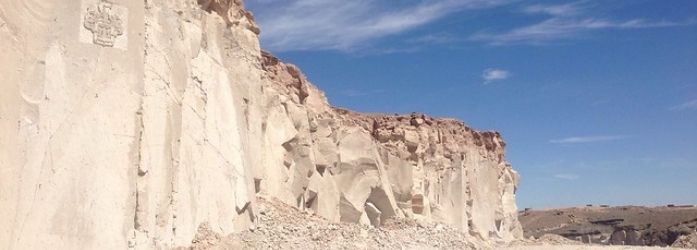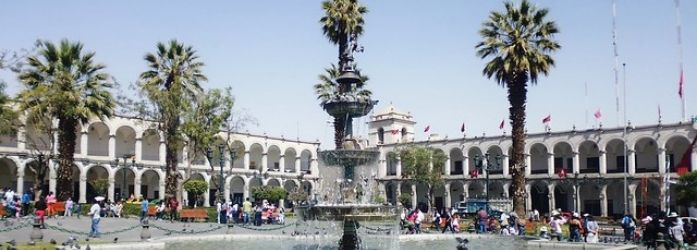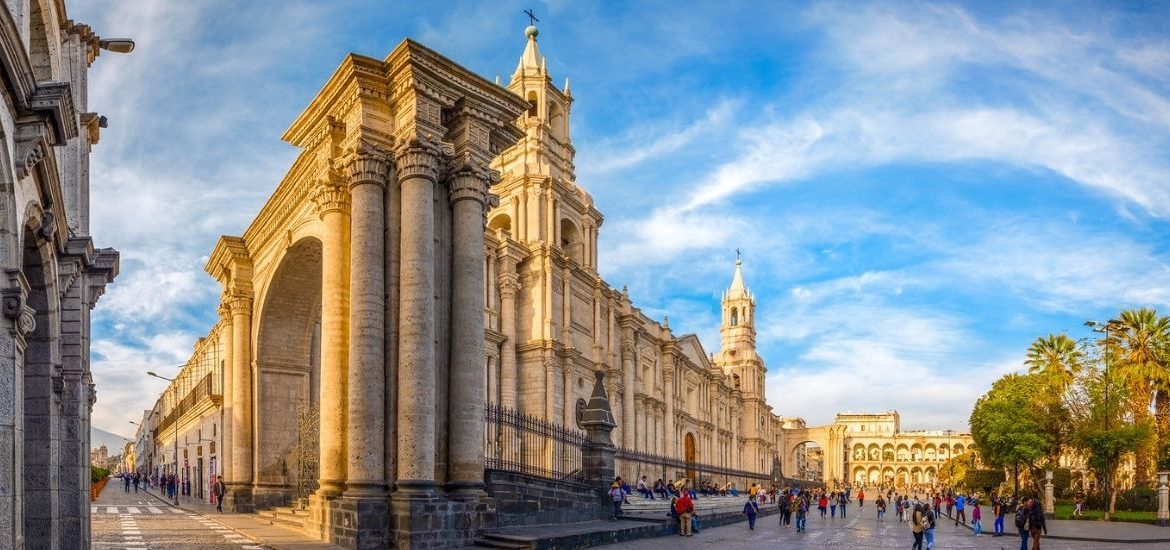Peru is a country full of diversity with surprising destinations from north to south, offering a wide range of options for all visitors to fully immerse themselves in our culture, with Peruvian art, fabrics, handicrafts, and in the countless mysteries and fascinating facts that surround it. the history of our country.
Among the many impressive cities is Arequipa, known as the second-largest city in Peru, after Lima, the capital of the country, located in the south of the Peruvian territory and which offers the attractions that fill the perfect historical and adventure itineraries in these lands.
The city was founded in 1540 by Lieutenant Garcí Manuel de Carbajal and was initially called Villa Hermosa de Arequipa. It ‘s name derives from a Quechua expression, “Ari-Quipay”, which means “behind the top”. In this sense, its name refers to the Misti volcano, one of the guardians of the city and the closest to it.
Arequipa has a colonial charm marked by the buildings that give this destination the famous nickname “White City of Peru” and here you will understand a little more about the reasons behind this name, in addition to discovering some of the most fascinating aspects of this place to visit. give you a glimpse into how many amazing things there are to do in this beautiful destination.
Are you ready to delve a little deeper into our diversity? So read on and be enchanted by this city that also represents a great Peruvian cultural heritage. Without a doubt, you will want to extend your itinerary for a few more days to add this destination!
What’s behind the “White City”

As mentioned earlier, Arequipa is also known as the “White City” and, in case you don’t already know, you must be wondering the reasons behind this name. Well, now that will no longer be a doubt, as we are here to tell you all about the story behind this nickname.
Arequipa is surrounded by three imposing guardians that, in addition to making the landscapes on its horizon beautiful, also guarantee the region an excellent material that has been used for centuries in the construction of local structures.
Most of the city’s buildings, especially those in its Historic Center, were built using ashlar. It is a white volcanic stone, which proved to be extremely efficient since the structures that use it remain firm and imposing until today.
This material is still used today and is extracted from quarries in the vicinity of the city, which are known as Canteras de Añashuayco, located at the foot of the Chachani volcano. For those interested in the subject, it is possible to take a tour of the quarry, where you will learn about the history of the white ashlar, as well as a little more about its extraction process and other enriching details about its use.
And while we’re on the subject, why not get to know a little more about the city of Arequipa and some of the main buildings in this destination that use this famous volcanic material in their structures? Stay tuned for details of Arequipa’s top sights ahead!
Arequipa’s Historic Centre
The city of Arequipa has one of the most impressive historic centers in all of Peru, as it is home to numerous monuments from the colonial era that mark the landscape with their grandeur and the essential feature of white ashlar in their structures.
The importance of this colonial center, which is easy to post on Instagram and perfect for making the most beautiful photos as a souvenir, it’s a wonderful world heritage by UNESCO, which reinforces the dimension of this place in our history.
Squares and Cathedrals

The first point to discover this city is the Main Square of Arequipa, which is considered one of the most beautiful in Peru. It is well ornamented and lined with palm trees. Also known as Plaza de Armas de Arequipa, it houses Neo-Renaissance-style portals made of granite.
A graceful place to stroll and rest on its benches, enjoying the facade of the Cathedral of Arequipa, all made of ashlar. Built in 1621, and rebuilt in 1868 after its destruction by several earthquakes, which are common in the region. The cathedral was the city’s first religious monument. Don’t miss this, which is the largest and most important cathedral in Peru, with its twelve marble columns, which represent the twelve apostles of Jesus.
Santa Catalina Monastery

The Santa Catalina Monastery is one of Arequipa’s main attractions, being a large complex that occupies an entire block. Being inside this place feels like being in a small town, due to the giant size of the building.
Like most buildings in the city, this one also underwent some reconstructions, necessary because of the earthquakes that hit the region. But its first construction dates from 1580 and one of its reconstructions, in 1660, kept the chapel’s original design.
Also made in white ashlar, its architecture has a fusion of indigenous and Spanish art, referring to the colonial period, which tells the history of the city. It has a long nave and its altar is adorned with religious touches.
Finally, visit the Society of Jesus, a building built in 1573 and rebuilt due to earthquakes. It also comprises an imposing facade with stylized decoration with the local fauna and flora, as well as carved frames with the figures of Jesus, Mary, and Joseph.
The Arequipa ‘s guardians.

Arequipa is surrounded by three imposing guardians, demonstrating that the beauties of this destination go beyond what man can do, but also that nature is a fascinating and patient artist. These three giants are known as the Misti, Chachani, and Pichu Pichu volcanoes.
Each of them has its outstanding characteristics, with the Misti volcano being the closest to the city and one of the few volcanoes in Peru that is still active today, while the Chachani volcano is the highest in Latin America, and the Pichu Pichu volcano, which is inactive, but that was the place where 3 Inca mummies were found in research expeditions.
For those who wish to have an impressive view of the three volcanoes, the square in the Yanahuara neighborhood is an excellent viewpoint from which to contemplate the landscape of the guardians of Arequipa. In addition, it is also possible to taste the “queso helado charito”, famous ice cream in the shape of cheese (from which the name derives), with vanilla and cinnamon flavor.
Arequipa is an amazing destination! And there’s so much more to discover in this city like Colca Canyon, Chachani volcano, San Francisco square, etc. So, be sure to check out the Viagens Machu Picchu website to find out more.
Also, take the opportunity to discover our packages Peru to numerous destinations in Peru and do not hesitate to contact us, we are just a click away. Don’t take away the chance to fulfill your dream!

